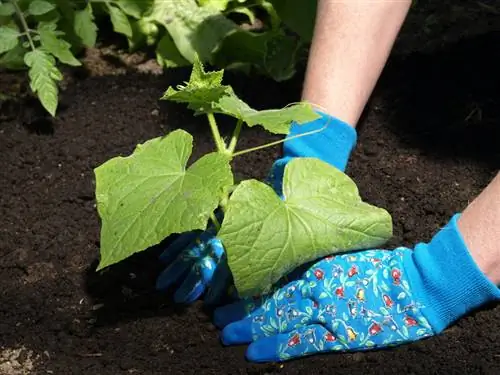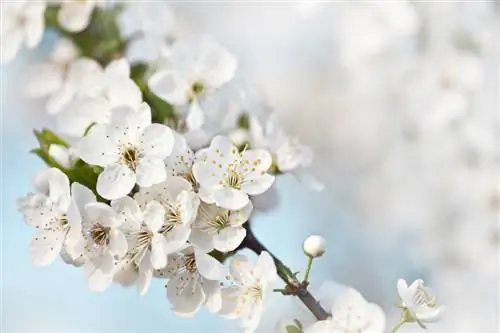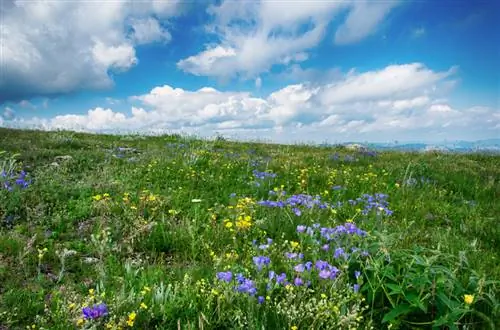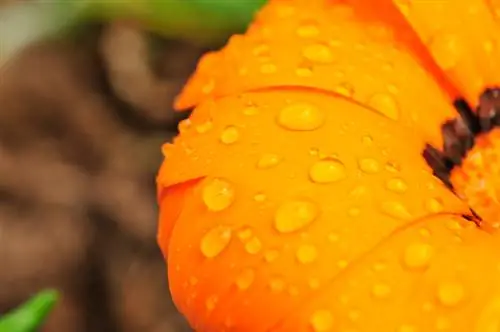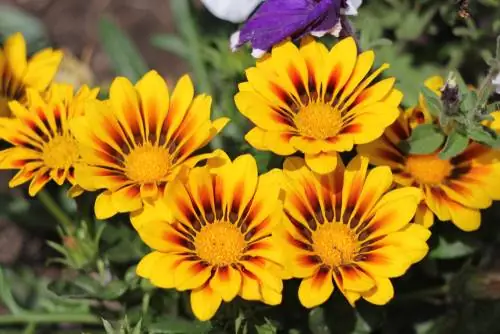- Author admin [email protected].
- Public 2023-12-16 16:46.
- Last modified 2025-06-01 06:02.
The easy-care Gazania only opens its flowers in the morning when the sun is shining, which is why it has a good reason for its German name “Mittagsgold”. It is relatively easy to grow from cuttings or sow.
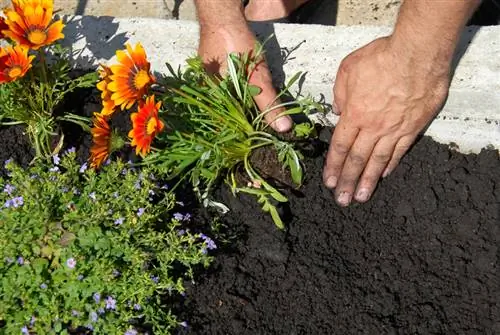
How to propagate Gazania?
Gazanias can be propagated by sowing or cuttings. When sowing, it should be noted that they are light germinators and therefore must not be covered with soil. Cuttings should be cut in late summer and planted in growing substrate.
Are there different types of Gazania?
There are around 25 to 30 species of Gazania worldwide. Many varieties are golden yellow with reddish or maroon markings. But there are also white, pink and red ray flowers, usually with a ring-shaped pattern in the middle. They can reach a diameter of up to 10 cm. The commercially available hybrids are mostly sold as annual summer flowers.
Can I use collected seeds from my own plants?
Hybrids are available from numerous plant species in a wide variety of colors, but they are often not capable of reproduction. Either they do not produce seeds or they germinate very poorly. In addition, the seeds are not of the same variety and color. So you never know what will come out of cultivation. Most Gazanias in the market are such hybrids. For this reason, you should buy seeds rather than collect them.
Can I propagate Gazania from cuttings?
Gazania can also be propagated by cuttings. This is practically the only way to get offspring from your own plants. Take the cuttings in late summer. It's best to plant the cuttings straight away in pots so that you can take them to a frost-free winter quarters to overwinter, because Gazania are not hardy in our area.
Select a few strong shoots about 10 to 15 cm long and remove the lower leaves. Then stick the shoots into growing substrate and keep it slightly moist. If the substrate is too wet, the cuttings will quickly begin to rot instead of forming roots. As with sowing, a pleasant temperature should prevail here, as gazania generally prefers warmth. In spring, the young plants then have to slowly get used to colder temperatures.
What do I have to consider when sowing?
So that your gazania can bloom in time in June, start sowing early. From February to April, sprinkle the seeds on a special growing substrate (€6.00 on Amazon) or a mixture of potting soil and sand.
As these seeds germinate in light conditions, these seeds must not be covered with soil, but they should always be kept slightly moist during the germination period. Place the growing container in a bright place. Also make sure that the temperature is around 18 - 20 °C, then the first seedlings will appear after around 15 days.
In a mini greenhouse or under transparent film, you can more easily maintain humidity and temperature at a consistently high level. Air your seeds once a day to prevent mold from forming. Once all seeds have germinated, you can remove the foil.
Planting out young gazanias
From the end of April or May, depending on the weather, you can get your young Gazanias used to the fresh air and put them outside during the day. It should be relatively warm and sunny. Under no circumstances should you place your Gazania in the rain. Bring the plants back into the apartment or house overnight. Only after the Ice Saints can the midday gold be planted in the garden and on the balcony.
The individual steps when sowing:
- Mix potting soil with sand
- Pour the mixture into a cultivation container
- Sprinkle seeds
- do not cover with soil
- moisten slightly
- place in a mini greenhouse or cover with transparent film
- place in a bright place
- keep slightly moist
- Keep temperature at 18 - 20 °C
- ventilate briefly every day
- Germination time approx. 15 days
- transplant with four to six leaves
Tip
If you would like to breed your own gazanias, then propagate them using cuttings. This is the only way to get plants that correspond to the original plant in terms of growth habit, size and flower color.


